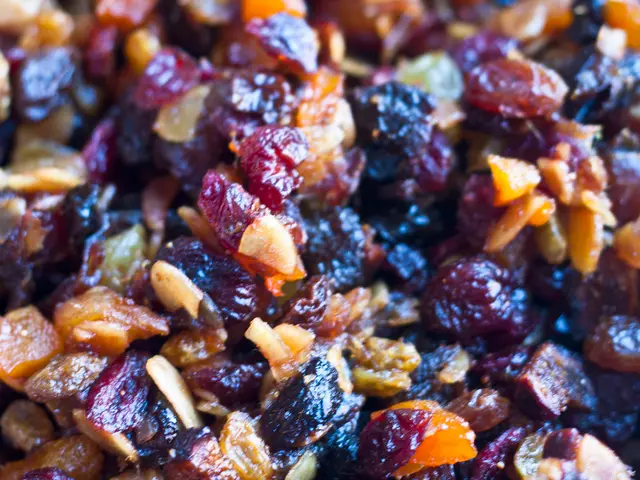Home-friendly Air Plant Species to Consider
=================================================================================
Air plants, scientifically known as Tillandsia, belong to the Bromeliaceae family and have around 650 species. These fascinating plants are native to humid regions of Central and South America and parts of the southeastern United States. Known for their ability to grow without soil, air plants are a popular choice for indoor and outdoor enthusiasts alike.
Tillandsia Ionantha
One of the most beloved species of air plant is Tillandsia ionantha. Known for its compact size, vibrant appearance, and transformation into red hues when it matures and is ready to bloom, Tillandsia ionantha is a favourite for beginners. These plants prefer bright, indirect light and can tolerate part shade. Weekly watering or misting is recommended, and it's essential to gently shake off excess water to prevent rot. Tillandsia ionantha thrives between 60-90°F (16-32°C).
Tillandsia Xerographica
Tillandsia xerographica is a large, striking air plant with curly, broad leaves resembling wild hair. This species prefers bright light and is drought-tolerant, thriving with less water than most air plants. It blooms with red or yellow blooms via a bloom spike. Tillandsia xerographica requires bright, indirect light and less frequent watering compared to other varieties.
Tillandsia Caput-Medusae
Tillandsia caput-medusae, also known as the Medusa's Head air plant, has snake-like, horizontally spreading leaves resembling hair strands. It produces red or blue flowers that can last up to a year. This air plant typically blooms in summer and prefers bright, indirect light.
Tillandsia Aeranthos
Tillandsia aeranthos is a tall and sturdy air plant with lime green, pointed leaflets. It blooms pink spikes with blue or purple flowers. Native to South America, Tillandsia aeranthos grows 3-6 inches width and height ranges 2-5 inches. It prefers indirect sunlight but tolerates some direct sunlight in the morning. Regular watering is required, ensuring the plant dries completely after watering, as its thick leaves store moisture.
Tillandsia Maxima
Tillandsia maxima is a striking air plant species native to Central and South America, known for its large, vibrant green leaves and ability to grow up to a foot tall. Its dramatic size and beauty are perfect for standalone displays. It can be mounted on driftwood, hung from the ceiling, or used as a centerpiece in modern décor. Tillandsia maxima tolerates more sunlight due to its origin from Oaxaca, Mexico, and produces brilliant purple flowers in its one-time bloom.
Tillandsia Bulbosa
Tillandsia bulbosa is a fascinating species of air plant recognized for its twisting, tubular leaves and bulb-like base. This air plant thrives by absorbing moisture and nutrients through specialized cells in its green leaves.
Tillandsia Cyanea
Tillandsia cyanea, or the "Pink Quill Plant," is a tropical air plant native to Central America, prized for its striking peach-colored bracts and vibrant, colorful flowers.
Tillandsia Tectorum
Tillandsia tectorum is covered in white fuzz and native to mountains. It prefers dry air.
Care Requirements Overview
Air plants generally thrive with bright indirect light and regular soaking or misting depending on species water tolerance. Most Tillandsia thrive with weekly soaking or frequent misting every few days. Tillandsia xerographica requires less water compared to other varieties. Air plants bloom typically once and then produce offsets ("pups") which can be removed once one-third the size of the mother plant to propagate new plants.
In summary, Tillandsia types vary in size, form, and flower color. Their care involves providing appropriate watering, light, and air circulation, avoiding soil, and allowing pups to mature for propagation. These hardy epiphytes generally do best with bright indirect light and regular soaking or misting depending on species water tolerance.
Display Ideas
Air plants are perfect for creative home décor. They can be mounted on driftwood, rocks, or hanging globes to showcase their unique structure. Tillandsia usneoides, also known as the Spanish Moss, can be draped over shelves, mounted on driftwood, or combined with other air plants for a natural, cascading effect. This iconic plant is a favourite for indoor and outdoor displays.
Air plants are also ideal for vertical gardens, mounted displays, or hanging arrangements due to their striking colours and ability to thrive like other air plants. Tillandsia andreana pairs well with other small air plants for an eye-catching arrangement.
Soil Requirements
Air plants do not require soil, making them perfect for home display and various environments. They naturally attach to trees and rocks in their environment.
Tillandsia ionantha, a favorite among beginners, can be beautifully incorporated into home-and-garden lifestyle, thriving in a well-lit spot and requiring weekly watering or misting with gentle shaking off of excess water. The striking Tillandsia maxima, with large, vibrant leaves and a foot-tall stature, adds a dramatic touch to modern home décor, showcasing well when mounted, hung, or used as a centerpiece. Despite not requiring soil, air plants remain a versatile addition to various home environments and garden displays.




